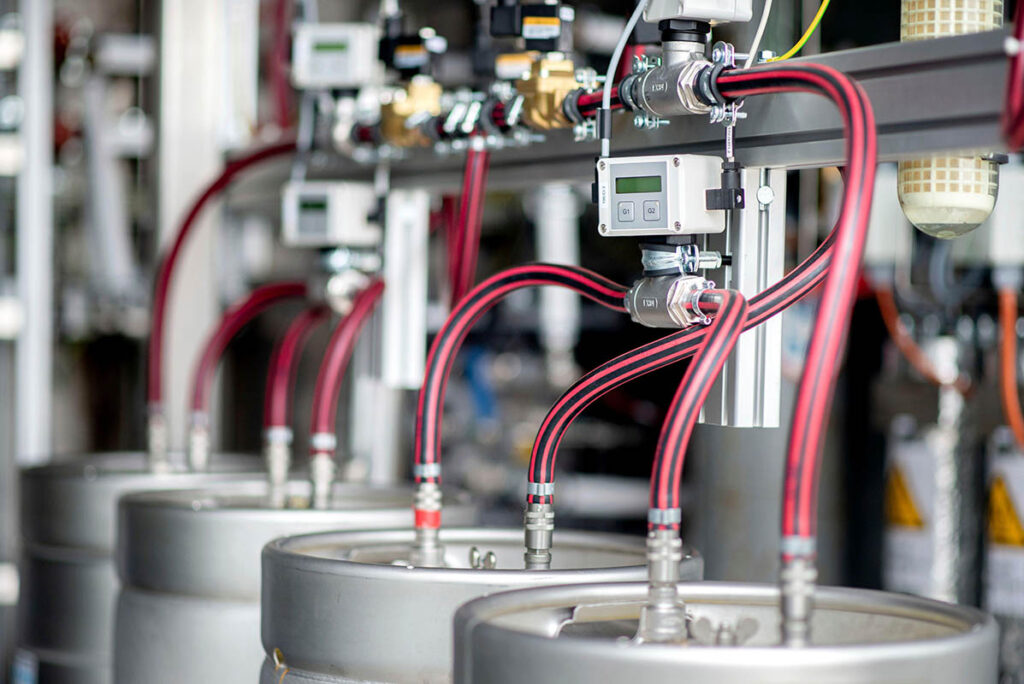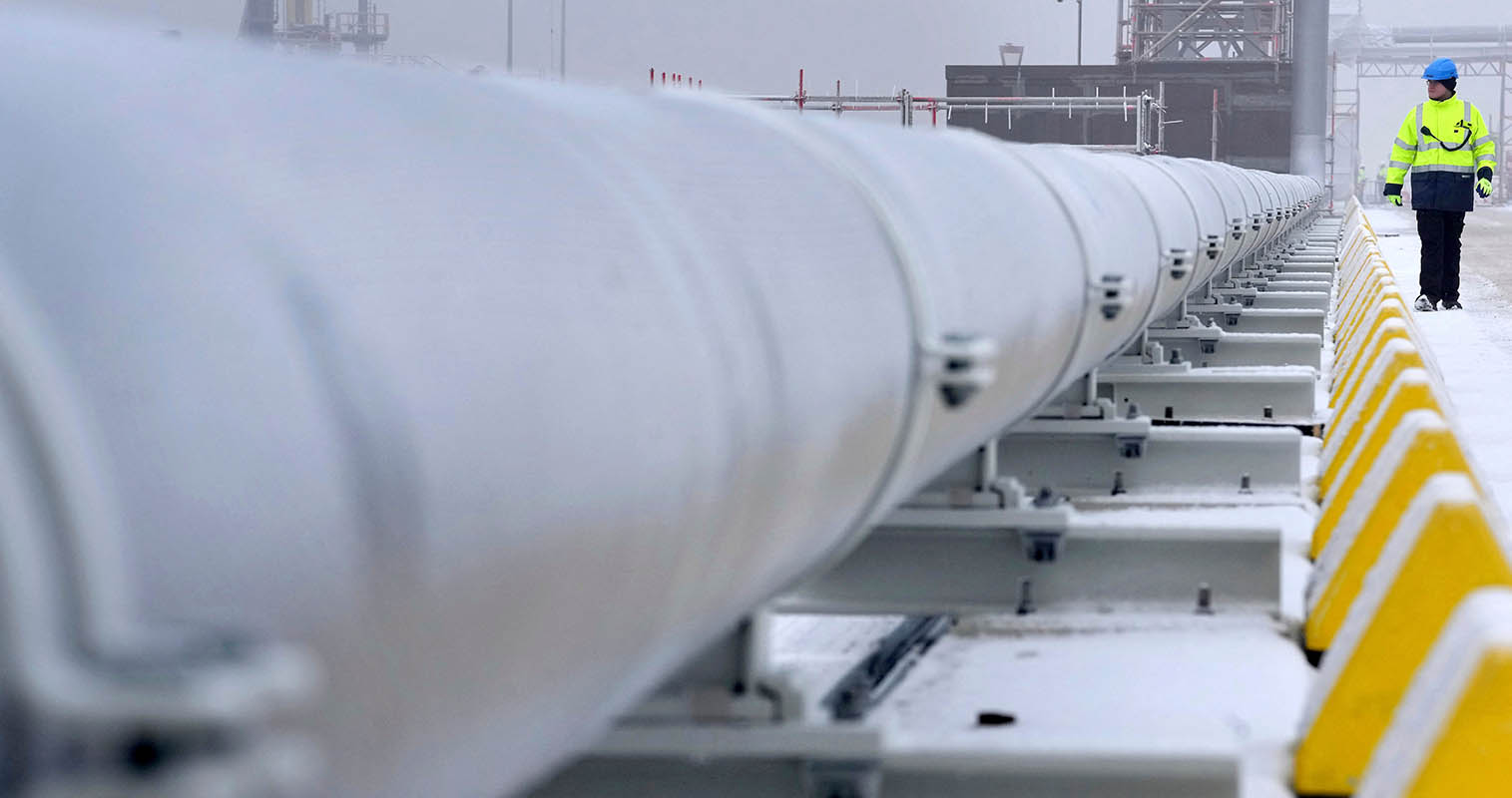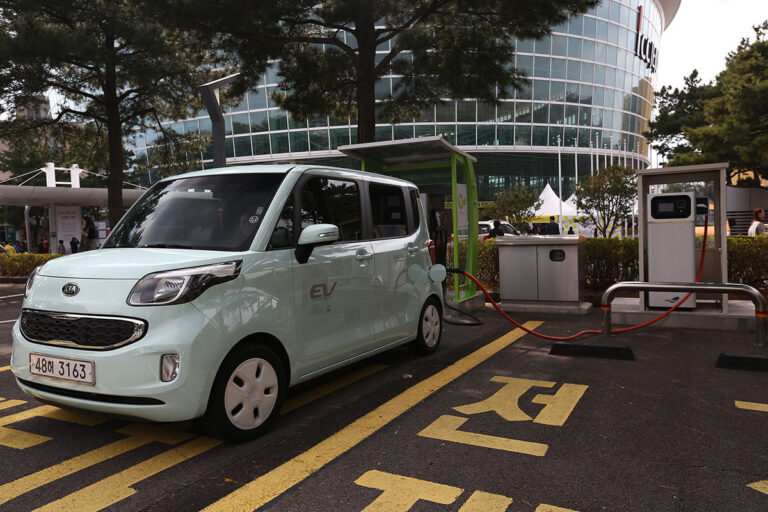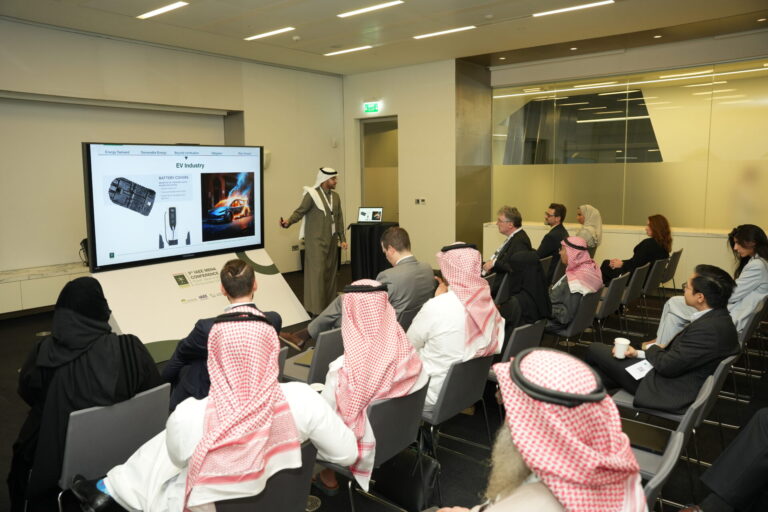A sunny climate and potential for large-scale solar photovoltaics (PV) put Saudi Arabia in a good position to cost-effectively produce green hydrogen by electrolysis for domestic use and export.
The adoption of hydrogen as an energy carrier is widely considered an important strategy for supporting the transition to clean energy. Further, using hydrogen in power generation as a fuel does not result in carbon dioxide emissions; it simply produces water vapor. The big challenge is how to produce ‘green’ hydrogen in a cost-effective manner. The most promising method at present is the use of electrolysis, commonly known as water splitting, whereby electricity generated by a renewable source such as PV or wind power is used to separate water into its constituent parts of hydrogen and oxygen.
A recent KAPSARC study examines the cost competitiveness of green hydrogen production in northwest Saudi Arabia and quantitatively compares its manufacture to that in a large-scale plant in Wilhelmshaven, Germany. Khalid Alhadhrami and co-authors from KAPSARC consider the costs associated with annual production of 0.213 million tons of hydrogen—a representative production figure in 2030, which aligns with the projected output of Saudi’s first large-scale green hydrogen project.
“Saudi Arabia’s rich solar natural resources and low solar PV technology costs make it a highly competitive hydrogen producer compared to Europe.”
Khalid Alhadhrami
The outcome of the economic analysis for such a production scenario is that the investment costs are potentially 25% lower in Saudi Arabia than Germany. The model predicts that the costs required would total $6.20 to $8.16 billion in Saudi Arabia versus around $8.11 to $9.79 billion in Germany. These cost estimates include the capital expenditure costs of the necessary renewable energy sources and electrolysis facilities.
A key reason for the difference is the electricity source required for the hydrogen generation. “Due to the differing natural resources, green hydrogen production is primarily from solar PV in Saudi Arabia, while wind power dominates in Germany,” explains Alhadhrami. “Saudi Arabia’s rich solar natural resources and low solar PV technology costs make it a highly competitive hydrogen producer compared to Europe.”
Driving down costs
The study highlights several areas where improvements in technology could further drive down the costs of green hydrogen production and export in the future.
The first is the selection of electrolyzer used for the electrolysis of water. Alhadhrami’s team concludes that, despite being less efficient (65-75%) at generating hydrogen, alkaline based electrolyzers are currently the most cost-effective option due to their lower cost. In contrast, solid oxide (84-90% efficiency) or proton exchange membrane (PEM) electroylzers (80-85%) are more efficient but more expensive. Variations in the cost or efficiencies of electrolyzers could change this economic analysis, especially if solid oxide or PEM technologies further mature and become cheaper.

A second area that remains a key challenge for hydrogen as an energy carrier is the cost and complexity associated with its transportation and export. “Hydrogen, being a very light molecule, must be cooled below -253°C for transportation. This requires specialized equipment and significantly increases costs. Hydrogen’s high flammability also necessitates strict safety measures during transport, adding to the expense,” explains Alhadhrami and his co-authors. “Future technological advancements are expected to reduce hydrogen transportation costs by improving liquefaction methods, enhancing safety standards, and expanding shipping infrastructure. These improvements will collectively contribute to lowering the cost of hydrogen transport.”
The researchers find that supportive government policies and the growth of market demand could further encourage global trade of hydrogen at scale. As the global hydrogen economy develops, Saudi Arabia is in a strong position to become a leading and cost-effective exporter of green hydrogen.
Reference
Alhadhrami, K., Al-Balawai, A., Hasan, S. & Elshurafa, A. The Cost of Green Hydrogen Production in Saudi Arabia and Germany: A Model-Based Approach. KAPSARC Discussion Paper. Article




